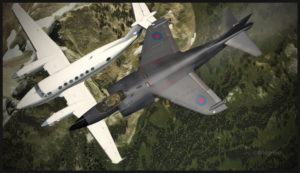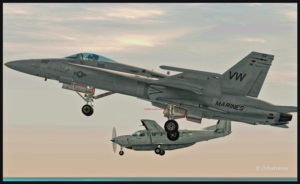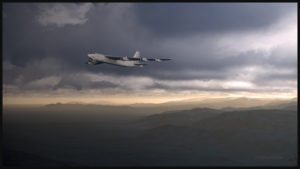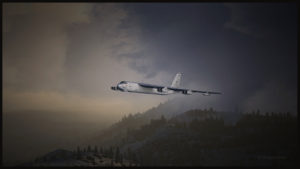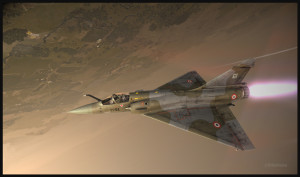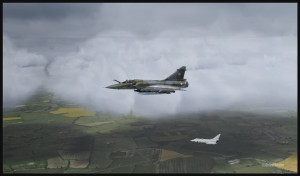An interesting challenge for flight simulation enthousiasts consists in searching and intercepting virtual aircrafts that are flying randomly: those without any known flight plans.
The degree of difficulty varies accordingly with the intercepted aircraft and the interceptor.
The screen capture below shows a relatively simple interception since it is not too difficult for the AV-8B Harrier to modify its speed according to the high cruising speed of a Beechcraft B350.
In order to increase the difficulty, the flight simmer could attempt the interception in flight of a relatively slow aircraft with a military jet.
A challenging virtual flight can be executed by using a CF-18 and adapting its speed and altitude to that of the intercepted aircraft while flying in formation for one minute. In order to succeed, it will be necessary to set the CF-18 in a slow flight configuration with the wheels out.
This type of interception is sometimes done in real life when an aircraft accidentally (or not) enters a restricted zone. A military jet must then take-off, reach the unknown target, get very close and make the appropriate signals ordering it to follow him to the closest military base.
Once in flight, do not forget to take a screen capture! Good luck and have a good flight!
Click on the link for other challenging virtual flights on my blog.
